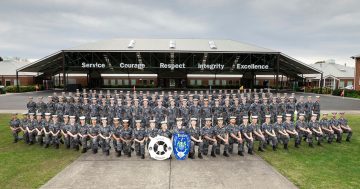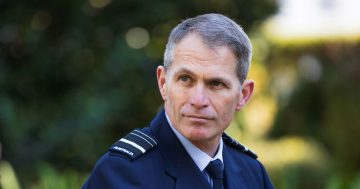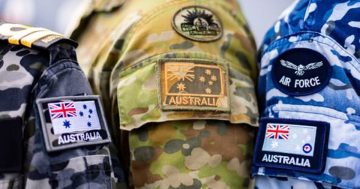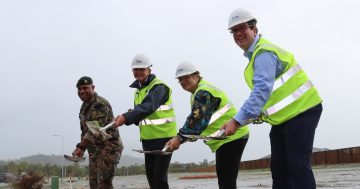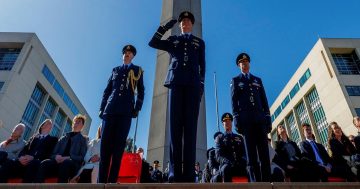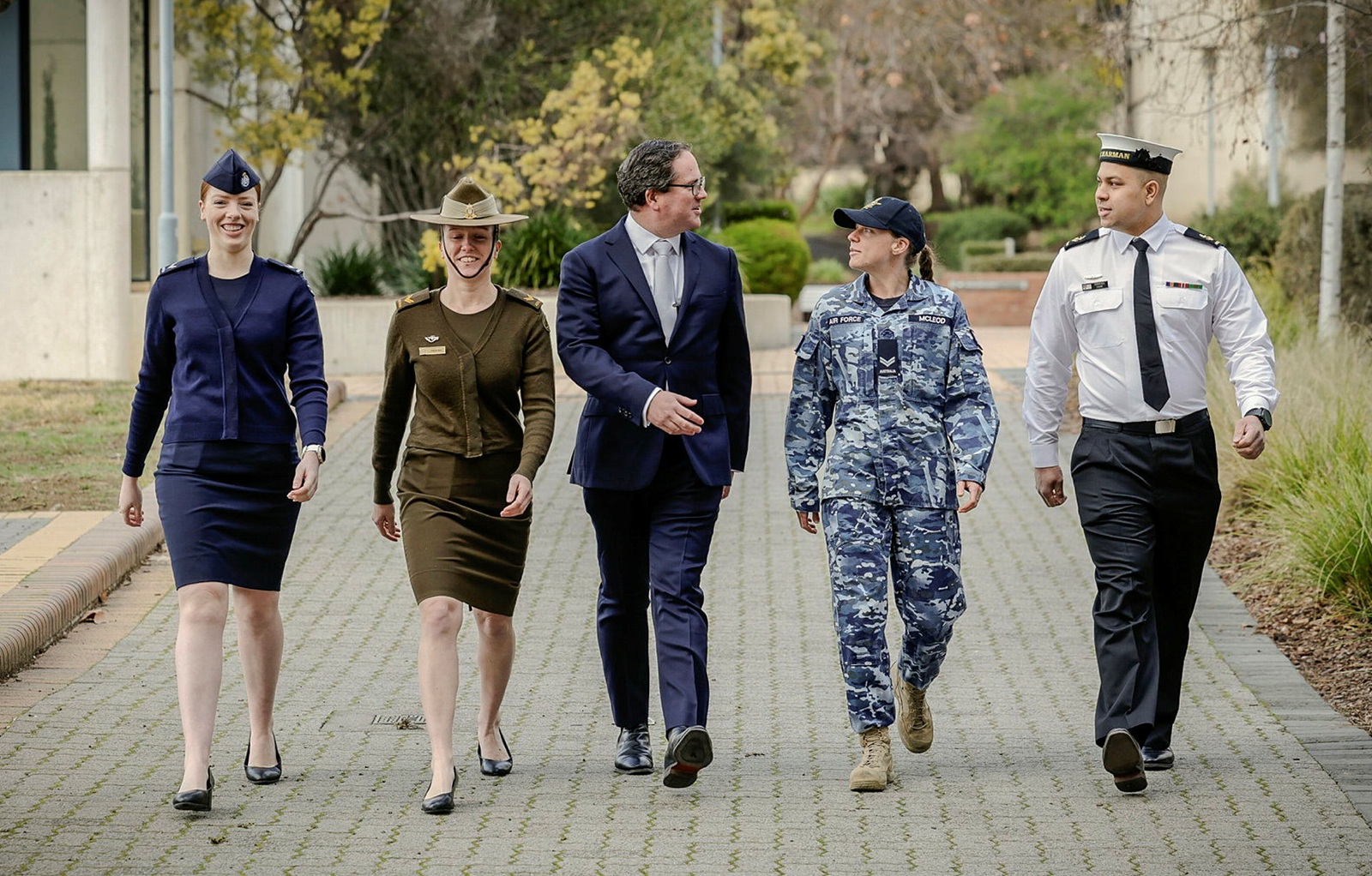
Minister for Defence Personnel Matt Keogh with recruits at the Australian Defence Force Academy. Photo: ADF.
Recruitment and retention targets in the Australian Defence Force (ADF) are finally close to being met after years of shortfalls.
New figures released by Defence show the ADF grew by more than 1800 personnel in the 12 months to 30 June, slightly ahead of the number required if the ADF is to grow to 69,000 uniformed personnel by 2030. As of 1 July, Defence said, the permanent and full-time ADF workforce was 61,189 people.
It said more than 75,000 applications to join the ADF were received in 2024-25, the highest number in five years and a 28 per cent increase on the same time last year.
Defence said more than 7000 people joined the permanent and reserve force in 2024-25, the highest number since 2010 and a 17 per cent increase on the previous year. Separation rates dropped to 7.9 per cent, well below the 10-year average of more than 9 per cent and a high of more than 11 per cent a few years ago.
It says retention has been improved by pilot initiatives such as the continuation bonus and the Defence Assisted Study Scheme, as well as better defence housing conditions. Defence says the retention pilot program was taken up by 5778 personnel.
The pilot program, implemented in May 2023, coincided with the appointment of a new recruitment contractor and the creation of a new Chief of Personnel role headed up by a three-star officer.
Additional funding was allocated to the pilot program in late 2024 on the back of the government’s 2024 Defence Workforce Plan, which examined planning and development, including the growth and future needs of the integrated workforce as outlined in the National Defence Strategy (NDS) and Integrated Investment Program (IIP).
The turnaround comes less than a year after the Australian National Audit Office (ANAO) found that Defence had not been evaluating the effectiveness of its recruitment advertising campaigns to see how well they worked.
Other contributing factors towards the improved rates include the opening up of ADF roles to overseas candidates from Five Eyes partner nations, and relaxing some medical conditions that may have previously ruled a candidate out, such as endometriosis and broken limbs.
The Acting Head of Military Personnel, Air Commodore Davin Augustine, said the results showed that the ADF continued to be a desirable and rewarding career for many.
“ADF Careers received the highest number of applications in five years last financial year, and the separation rate is the lowest it has been since mid-2016,” he said.
“It is important to recognise and celebrate the achievements of our people in attracting, enlisting and retaining ADF personnel this past financial year.
“While we all know there is more work to do, these results show the ongoing commitment, dedication and hard work of our people as we continue to work towards our targets.”
Defence Minister Richard Marles said it was essential that Australia had the defence force it needed to help protect its strategic interests, which was why the government had made significant investments to support and grow the workforce.
“When the Albanese Government came to office, we inherited a personnel crisis,” he said. “Throughout the near-decade the Coalition was in office, the ADF grew by just 2000 people.
“In 2025, the ADF is now growing again for the first time in almost four years. While there is much more work to do, we are confident these positive trends will continue.
“The Defence Workforce Plan centres our efforts to recruit and retain the highly specialised and skilled workforce required to meet capability needs.”
Minister for Defence Personnel Matt Keogh added: “It’s fantastic to see more and more Australians signing up for an exciting and fulfilling career in the ADF.
“These efforts are complemented by our ongoing efforts to retain our personnel in service for longer, with improvements to how Defence personnel and their families are supported at work and at home.
“We know that we’ve got terribly difficult geo-strategic circumstances that we face, and the Defence Strategic Review that we undertook made very clear that we had to get about increasing the size of our Defence force, as well as recalibrating our capabilities across the board.
“And what we’ve been getting about over the last three years is making sure that we deliver on that increase in our most important capability – that is, our people.
“A stabilised and strengthened workforce is the foundation that we need to continue to grow, to reskill and transform to have the future workforce required to deliver against the 2024 National Defence Strategy.”



